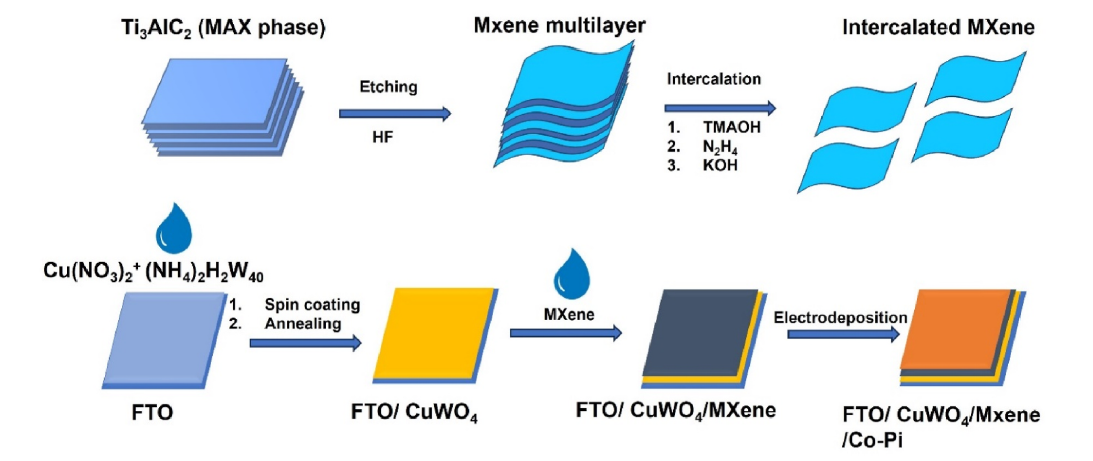| (2024.11) Engineering the work function and interlayer spacing of MXene via the intercalation process for efficient photoelectrochemical water splitting of CuWO4 | |||||
| 작성자 | 관리자 | 작성일 | 2024-12-27 | 조회수 | 64 |
|---|---|---|---|---|---|
|
· 논문명 : Engineering the work function and interlayer spacing of MXene via the intercalation process for efficient photoelectrochemical water splitting of CuWO4 · 저 자 : Nam Le, Duc Viet Nguyen, Jin Suk Chung, Seung Hyun Hur* · 게재지 : International Journal of Hydrogen Energy (2024, 90, 961-971) · 초록 In recent years, copper tungsten oxide (CuWO4) has attracted increasing attention as a highly potential candidate for photoelectrochemical (PEC) water splitting, primarily because of its suitable bandgap, which enables efficient light absorption. However, challenges such as high charge recombination and poor bulk transport have resulted in low PEC performance. To address this, MXene, a novel member of two-dimensional (2D) material, was used to mitigate charge recombination by serving as a hole-transporting layer (HTL) deposited onto a CuWO4/FTO substrate. In this study, MXene was fabricated by interactions with different solvents, including tetramethyl ammonium hydroxide (TMAOH), hydrazine (N2H4), and potassium hydroxide (KOH). The work function of MXene and interlayer spacing were adjusted via the intercalation process with various intercalant agents which changes the surface functional groups of MXene to modify the work function and increase the surface area. In addition, the generation of Schottky contact at the CuWO4/MXene interface could improve the charge transfer and decrease the charge recombination. The photoelectrodes synthesized in this study were thoroughly characterized using various analytical techniques, including linear sweep voltammetry, high-resolution transmission electron microscopy, electrochemical impedance spectroscopy, and ultraviolet spectroscopy. The results showed a notable improvement in the photoelectrochemical (PEC) performance of 0.35 mA/cm2 of the FTO/CuWO4/TMAOH-MXene/Co-Pi photoanode. The synergistic combination of CuWO4 and MXene facilitated efficient charge transfer from CuWO4 to the intercalated MXene and reduced electron-hole recombination. The findings suggest that MXene-modified CuWO4 photoelectrodes hold great potential for efficient hydrogen production, thereby advancing the development of sustainable energy technology.
|
|||||


